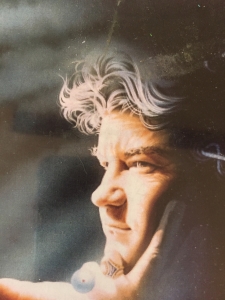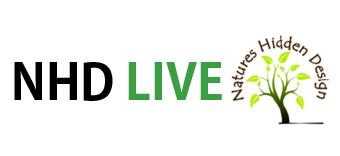Let us never forget that the objective of everything that we all do with kinesiology is to help people to get well and stay well. We are all on a unique journey and kinesiology is a wonderful vehicle to help us get on track and stay on track. Kinesiology can help to accelerate us in the original direction provided by designer.
So the focus of every article in this series is asking the question “where am I stuck in my journey and what do I need to do to get unstuck.” This stuckness can range from pain in the physical body, to anxiety, or just a general feeling of physical unwellness. It can include depression and apathy and a lack of drive as well as addiction, obsession and general mental unwellness. Remember, by divine design you have a blueprint for love, joy peace, prosperity and health. If you are not walking in these areas, then you can use kinesiology to can help you get back on track.
Kinesiology: Humble beginnings

Dr George Goodheart
So where did it all start? Back in the 1960s, a chiropractor called Dr George Goodhart made an observation. Hundreds of others had probably made in the same observation before, but Dr Goodhart saw something that no one else had seen. His intense curiosity to understand what he had just observed, lead him to discover the world of what we now call kinesiology and, as they say, the rest is history. Over many years Dr Goodhart developed Applied kinesiology, (https://icak.com/) also known as AK, which he taught to many chiropractors.
Kinesiology for you and me

Dr John Thie
One of the chiropractors that Dr Goodhart taught was Dr John Thie. Dr Thie immediately recognised the potential of this new system to help people to resolve their own health issues in their own homes. Against the wishes of the chiropractic association and his colleagues, Dr Thie developed and launched a system of kinesiology called ‘Touch for Health’ which has been taught all over the world and has been a blessing to hundreds of thousands of people. In fact it is ‘Touch for Health’ that has exposed most people to kinesiology and it is fair to say that most of the new forms of kinesiology developed from this platform.
Kinesiology: The Pioneers
Doctors Sheldon Deal, David Walther, Alan Beardall, John Hughes, Walter Schmitt where all part of this early group and all made very significant contributions to what we now call kinesiology. Each in turn developed their own unique understanding and you can get a deeper appreciation of the enormous work that they did by looking at the Touch for health and interactive tree.(https://www.etouchforhealth.com/community/tfhtree/)

Kinesiology for health
This fascinating interactive page shows you where all of the different types of kinesiology we have today came from. You can click on the link and it will take you to the website of the relevant folks involved.
You can also find links regarding ‘Touch for Health’ to the relevant associations in many countries around the world on this same page.
This is a tremendous resource for those interested in seeing where any branch of kinesiology came from and how it has developed to being a tremendous self-help tool for so many people. It will help you to see just how big an impact ‘Touch for Health’ has had on the world. John Thie died in 2005.
Thank you John for your commitment to making the world a better placce
I need help, and I’m not getting it from conventional medicine

If this is you, then you’re joining a growing family of like minded people. Strange as it may seem this very issue has been the driver for quite a few of the most powerful kinesiology systems that have been developed. People finding themselves unwell were driven to find different more holistic solutions to their health challenges. Lets take a look at a few:
PKP (Professional Kinesiology Practitioner)

Dr Bruce Dewe and Mrs Joan Dewe
This was the case for PKP and Dr Bruce Dewe. Bruce was an exceptionally gifted medical doctor and surgeon, but he became unwell with what at the time was considered an incurable medical condition. As he says himself, when he woke up with 10% of one lung working in an oxygen tent, he realised that if he didn’t do something different he was going to die. The ‘something different’ for Bruce became PKP (Professional Kinesiology Practitioner) http://www.icpkp.com/. This form of kinesiology is undoubtedly the most comprehensive and all-encompassing kinesiology available today anywhere in the world. It is highly structured and easy to learn. You can start knowing nothing and over 4 years can become a highly trained professional with a full diploma. But you can start helping people after just a few weeks training.
This is an example of how great good came out of great adversity. Every challenge can either defeat us or make us stronger. It depends on your attitude.
LEAP (Learning Enhance Acupressure)

Dr Charles Krebs
The same is true for the LEAP program developed by Dr Charles Krebs.
Charles is a marine biologist and a very experienced diver. However on one occasion after a dive on the Great Barrier Reef he ended up with a nitrogen Benz bubble in his spine and was told that he would never walk again. In fact he was told he would be paralysed and in a wheelchair for the rest of his life. Charles however, like Bruce Dewe discovered Touch for Health and PKP and despite what the neurologists say, and they still say it should be impossible for him to walk, Charles is walking. His journey in kinesiology let him to develop a tremendous system for helping people with learning difficulties which he calls LEAP (http://www.brainintegration.net/leap-brain-integration.html) Charles has has also trained many excellent practitioners around the world and it is possible to learn his system.
Applied Physiology (AP)

Richard Utt
The list goes on and there are many worth mentioning but one in particular is Richard Utt.
Richard was an aeronautical engineer working for the US Air Force in Tucson Arizona when he became very sick with an inflammatory disease that no one could cure. Richard discovered some extraordinary new things about how kinesiology worked and he put this together in a program called Applied Physiology.(https://www.appliedphysiology.info/)
Amongst his discoveries was the reality that the human body operates in a holographic form and that many deep and buried traumas get locked into this hologram. Richard found ways to access and release these traumas in a very profound and simple way. Richard was also responsible for discovering the concept of formatting and the work he did on the human brain was instrumental in helping Charles Krebs and others to develop their systems.
Neuroenergentic Kinesiology
And so it goes on. Hugo Tobar, (https://www.nkinstitute.com.au/hugo-tobar.html) who developed ‘Neuroenergetic’ kinesiology built a lot of his work on the discovery that Richard had made.
What I do to help myself ?

This is a very valid question in the light of all the different types of kinesiology that are out there. The answer thankfully is simple. Start at the beginning with a 1 day course and see how you like it. Because I started my training in the 1980’s, I myself have been privileged to train with many of the folks mentioned above and so I have a fair understanding of the the subject. I am putting much of this knowledge together in on line courses that you can take in the comfort of your own home. (www.nhdlive.com) And of course you as already mentioned you have a huge resource available to you in the touch health tree kinesiology. (https://www.etouchforhealth.com/community/tfhtree/).
Kinesiology: finding a practitioner.

Most of the websites provide you with lists of trained practitioners.
If you want a treatment, the best place to start is by finding PKP practitioner or an AP practitioner in your area if you can. These folks are very highly trained and they can teach you how to help yourself from the very first session.
Kinesiology: Starting my journey back to health

At the end of the day your healing is your journey and it is about empowering you see what changes need to be made and to help you make these changes. All the different kinesiology systems can do this in their own ways, but because PKP embraces many of them in its design, it is by far the best place to start. You will find PKP (and kinesiology in general) to be very gentle, because at of the day the objective of the practitioner is to help you become the person you were designed to be by setting goals with you that resonate with your spirit and your soul.
In the next article rule out is the question what is kinesiology? And I will explain how it works, so you will have few surprises when you finally find kinesiologist.














